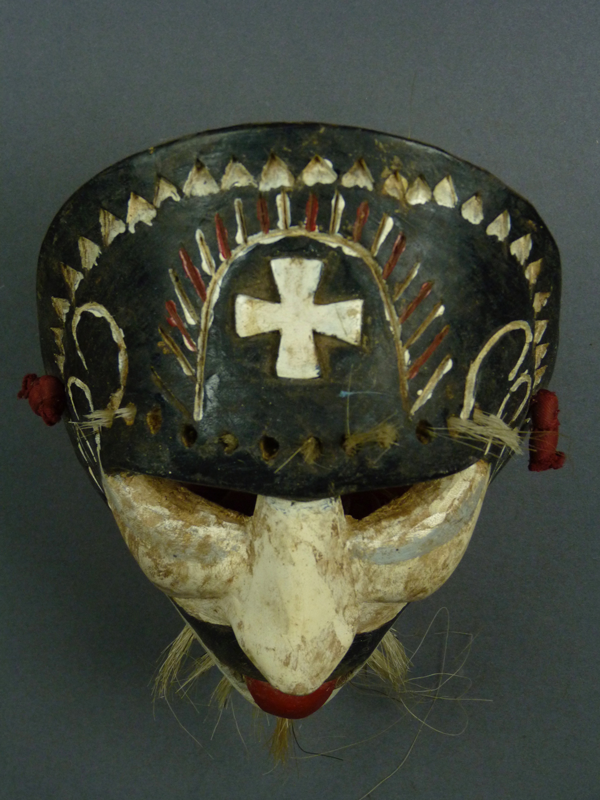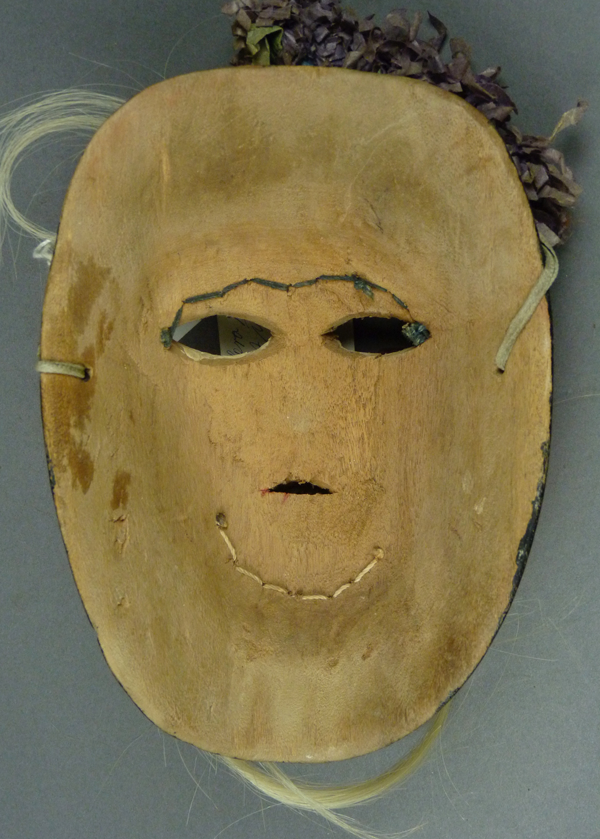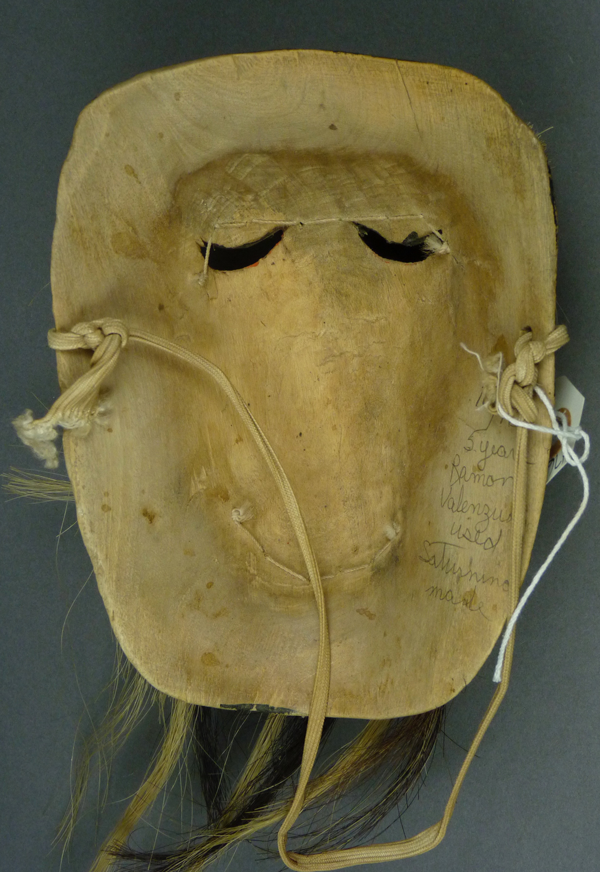Barney Burns and Mahina Drees kept many danced examples of masks carved by Saturnino Valenzuela for their own collection, even as they bought and sold many of his undanced masks to Indian Arts Dealers and collectors. Today we will examine nine of those “keepers” that have human faces, along with one at the end that depicts the devil. This is just a sampling.
The first is one of my favorites from this collection, an old and worn human faced mask. It was collected in 1986.
Stars flank the forehead cross.
This cross is enclosed in a ring.
The back demonstrates moderate staining from use.
The second mask was collected at an unknown date, after two years of use by a dancer.
The forehead cross is framed by an arch. There is essentially a double rim design.
The back is heavily stained from use.
This mask was collected in 1988, after it was danced by Saturnino’s son for an unrecorded period of time.
I like the bright colors of the flowers and stems on the cheeks.
You have seen this characteristic curled tongue in previous posts.
This is aluminum roofing paint on the cheeks.
There is moderate staining from use.
The date of collection was not recorded. his mask was danced for three years.
A relief carved flower decorates the forehead cross.
The face of this mask is vigorously carved.
An arch anchored in flowers shelters the forehead cross. Flowers represent the sacred wilderness world.
The back is moderately stained from use.
This mask was collected in November, 1991, after an undocumented period of use.
I particularly like the inscribed and painted lines across the forehead.
Danced by Garcia? The back is moderately stained from use.
The date of collection is unrecorded, but this mask was danced for one year.
I like the vigorous simplicity of this mask.
The forehead cross is attractively framed.
The face appears to be framed by white petals.
The back seems only mildly stained by use.
This mask was collected in 1996 after having been danced for five years.
The mouth forms a snout.
An image of a saguaro cactus decorates both cheeks.
The back is markedly stained from use.
This mask was collected in 1989.
I wish that I knew the significance of the spots.
The back appears to be moderately stained from use.
Saturnino Valenzuela was probably the carver of this mask that was made in an older style. The date of collection is undocumented and we do know that the mask was danced for three years.
The face is framed by a pair of horns, in lieu of a rim design.
The back is darkly stained from use.
The last Mayo Pascola mask in today’s post is highly unusual, with the face of a devil. It was collected in 1988.
This devil has black horns.
There are black snakes on the cheeks.
Incongruously, there is a cross on the forehead.
The back is moderately stained from use, as if it might have been danced for a year or so.
Next week we will examine Animal Faced masks from the collection of Barney Burns and Mahina Drees that were carved by Saturnino Valenzuela.
Bryan Stevens



















































